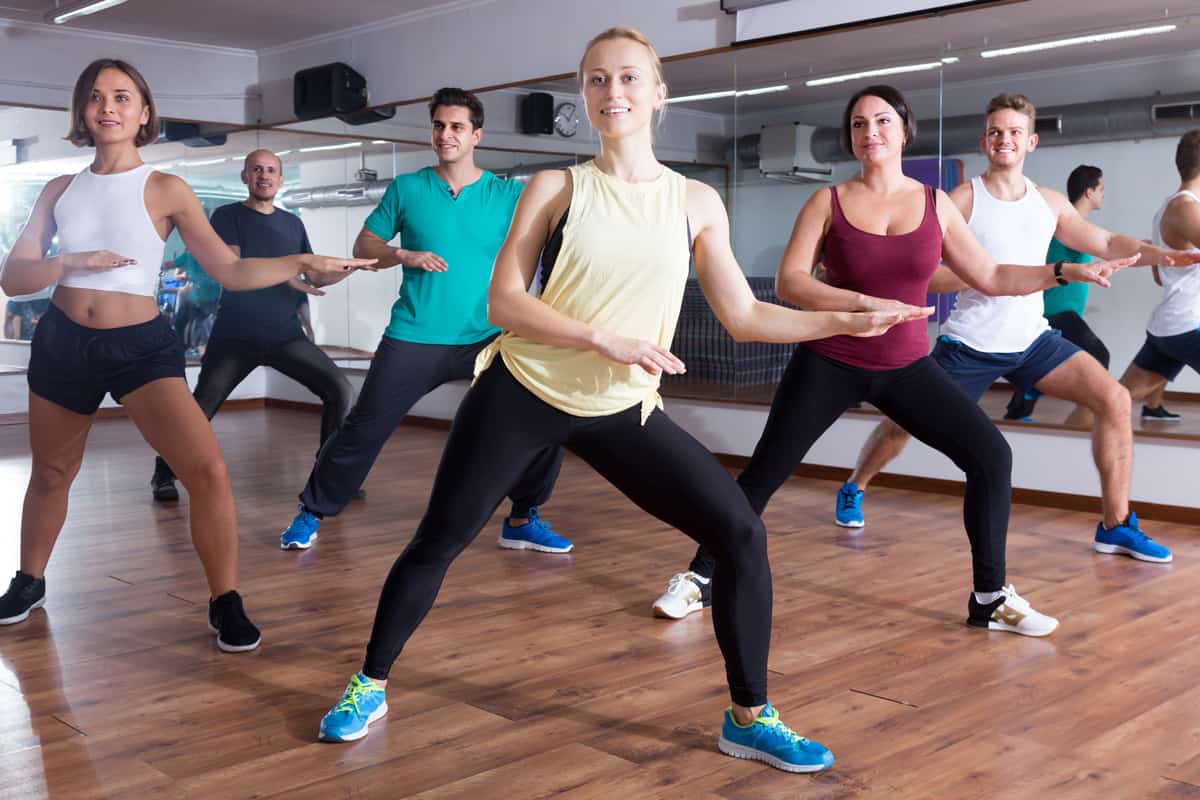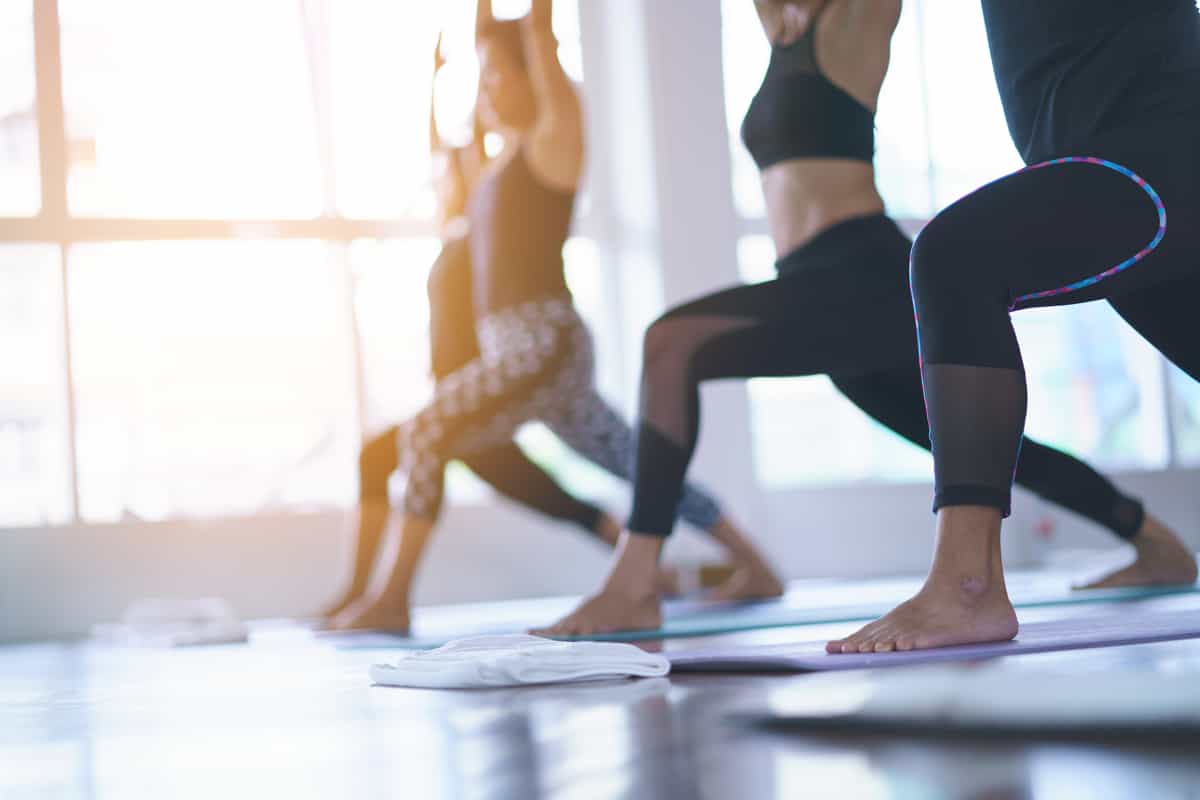Zumba is a dance-based exercise method that allows you to have fun while breaking a sweat. It is a healthy activity that can assist in weight loss for most people. And with the lively environment in Zumba classes, you'll be excited to attend every session. But you may be wondering, how much Zumba is too much?
Doing Zumba every day can lead to stress injuries and weight-loss plateau. Instead, focus on doing Zumba two to four times each week and doing other types of exercise such as weight training, yoga, cycling, or running, as well as getting an appropriate amount of rest.
There are many schools of thought on Zumba and weight loss, so this subject can be overwhelming. But don't worry, we've done the research to answer your biggest questions about Zumba and how to use it as a weight-loss tool. Soon you'll be dancing your way to your health goals. Let's continue, shall we?

What Is A Zumba Workout Like?

Zumba is a dance-based class led by certified instructors who teach participants choreography to go along with Latin and international music. These dance moves are full-body moves and are designed to give participants an aerobic workout.
Typical Zumba classes are hour-long, social, fast-paced workouts. Instructors focus on the "fitness is fun" theory, believing that people who enjoy their exercise are likely to do it more often.
All Zumba choreography is based on sixteen basic moves stemming from four types of Latin American dance: salsa, reggaeton, merengue, and cumbia.
How Do You learn Zumba Moves?
Like most things in life, the best way to learn Zumba moves is to do them!
Zumba instructors are generally patient people who love to teach their craft. They won't make fun of you or criticize you for not knowing the movements. In fact, instructors are explaining and demonstrating the movements during the class, so you can learn quickly. Classes are designed so that participants can go at their own pace.
But, if you'd like to get a sense of the steps before showing up to class, you can find video tutorials on the internet like the one below:
Is Zumba Safe For Seniors?

A major benefit of Zumba is that it is safe for any age, including senior citizens. Different classes focus on different age groups and abilities, and participants can choose their own pace.
However, any senior who has joint, heart, or other medical issues should consult their doctor before joining Zumba. Some Zumba workouts include jumping, which might be difficult or dangerous for seniors to attempt.
Will You Lose Weight Doing Zumba Every Day?
The most basic way to lose weight is to expend more calories than you consume. This creates what is known as a "caloric deficit." A frequent, consistent caloric deficit combined with a nutritious diet is how to lose weight in a healthy way.
Essentially, you have to have a caloric deficit of 3,500 to lose one pound. This means that if you have a daily caloric deficit of 500 calories for one week, you can expect to lose one to two pounds.
However, this is not a hard-and-fast rule as weight loss also depends on many factors such as genetics, age, current weight, body type, and heart rate. For some people, losing weight is easier than others.
How Many Calories Do You Burn In A Zumba Session?
A study done in 2012 determined that you can burn 300 to 900 calories per hour of Zumba at mid to high-intensity, with the average person burning about 9.5 calories per minute. This is a better burn rate than kickboxing, power yoga, or step aerobics. Zumba has the added benefit of being fun, removing the monotony of running or swimming.
Importance Of Weight Training
While aerobic, cardio exercise like Zumba is a great way to burn calories, you should also add weight training to your workout plan to get the best results.
Weight training, a form of exercise that uses resistance and weight to strengthen muscles, allows your body to burn calories while resting and recovering. When you lift weights, your muscles are essentially broken down. Your body then repairs these muscles, making them stronger than they were before.
So, when you do weight training, your body burns calories repairing these muscles in the hours and days after exercise.
Additionally, muscle is easier for your body to turn into energy than fat is. So when you do aerobic exercise to burn calories, your body is likely to use your muscles to replace lost energy instead of your body's fat. Fix this problem by continually growing your muscles and forcing your body to burn fat.
Mix It Up!
In addition to Zumba and weight training, try doing some other forms of cardiovascular exercise. Too much of any particular activity is likely to cause stress injuries. Though Zumba is a low-stress exercise, it still repeats the same bodily movements repeatedly.
Mixing in other forms of exercise such as weight training, swimming, walking, jogging, cycling, tennis, and yoga use different muscles, allowing your body to be well-rounded.
What Are The Disadvantages Of Zumba?
Zumba classes are rarely free. Though you can find some Zumba instructional videos online, they do not provide the same experience as an actual class. If you are not interested in spending money, there are other forms of exercise that are free such as jogging, walking, bodyweight exercises, and others.
As has been mentioned above, Zumba does not provide much weight training (although there is a form of Zumba which is done while holding "toning sticks"). At some point, your muscles will reach a plateau and will not get stronger, even as your cardiovascular fitness increases. Mix strength training into your exercise plan to maximize your potential.
Zumba also does not have a flexibility component. So if a participant's only form of exercise is Zumba and they do not stretch or do yoga, their muscles will tighten over time. This can lead to pulled and strained muscles. You can fix this problem by varying your forms of exercise and including plenty of strength training and stretching.
Should You Eat Before Or After Zumba?
The easy answer? Both. Not having enough food in your system while doing Zumba could cause dizziness, tiredness, and lethargy.
When you plan on doing any sort of exercise, it is a good idea to have eaten a healthy, balanced meal three to four hours before the activity. Light, nutritious snacks should be eaten one to three hours before class. These snacks might include:
- Granola bar
- Fruit
- Whole-grain bagel
- Fruit smoothie
- Energy bar
- Assorted nuts
If your Zumba class is in the morning, wake up early enough to get one of the above foods in your system before you begin. Eating too much right before your Zumba class could cause an upset stomach.
After you've burned all those calories, replace them with foods that include carbohydrates and protein such as:
- Yogurt
- Peanut butter sandwich
- Post-workout supplement
- Pretzels
- Turkey or fish
Eat these healthy foods within a couple of hours after completing your workout for the best results.
Can You Do Zumba In The Evening?
You can do Zumba at any time of the day.
Some people would say that exercising close to bedtime is a problem because the adrenaline produced by your body and the rise in temperature makes sleep more difficult. Most experts, however, say that this is not a proven theory.
Exercising, no matter what time of day, improves sleep. There is no real evidence that doing it too late in the day is harmful. Listen to your body: if it struggles to wind down right after exercising, then stick to morning Zumba classes. If your body can handle it, work out whenever fits your schedule. Your body will benefit from exercise no matter what time of day it is.
Which Is Better: Yoga Or Zumba?

Yoga and Zumba are both beneficial forms of exercise even though they have very different goals and purposes.
Yoga is an ancient spiritual practice designed to form one's physical and mental health through a series of poses. Nowadays in non-Hindu cultures, it is used as a low-impact form of exercise that increases balance, flexibility, and stability. It is a holistic system that seeks to help participants align themselves.
Most yoga participants' heart rates do not climb as high as a Zumba participant does, as yoga is less of a cardiovascular challenge. However, yoga does stretch muscle groups and use body weight to increase strength. Yoga also does not burn as many calories as Zumba (though some forms of yoga such as "hot yoga" or "power yoga" are high-burning activities).
Determining which form of exercise is better depends on your goals. Are you trying to lose weight, grow lung capacity, or increase heart health? If so, then Zumba is a better option.
Are you trying to relieve tension, increase flexibility, recover from an injury, or strengthen certain muscle groups? Give yoga a shot.
Is Zumba Better Than Walking?
Just as the comparison with yoga, determining whether Zumba or walking is better depends upon your definition of better.
An hour of walking burns between 210-360 calories for the average person, less than an hour of Zumba. Zumba works the entire body including legs, core, and arms while walking mainly uses the legs. So if your goal is weight loss or calorie burn, Zumba is more efficient.
However, Zumba classes usually are not free, while taking a walk costs nothing. Walking does not require driving to a class location and can be done without planning around a class. Zumba works your entire body and is a more efficient form of exercising than walking. But you should assess your priorities before deciding if Zumba is better for your situation.
In Closing
Zumba is a fantastic form of exercise when combined with weight training and other forms of cardiovascular activity. A good goal is to participate in Zumba two to four times a week, using the other days to work on muscular strength and flexibility. Pair this workout plan with a healthy diet to help you lose weight. Good luck and happy dancing!
Before you go, be sure to check out these other articles that may be of interest to you:
16 Types Of Fitness Classes [See Which Ones You Can Do At Home]






![Read more about the article Best Paint For Basketball Court Lines [Outdoor And Indoor]](https://fitseer.com/wp-content/uploads/2022/05/blue-background-of-newly-made-outdoor-basketball-court-in-park-500x333.jpg)